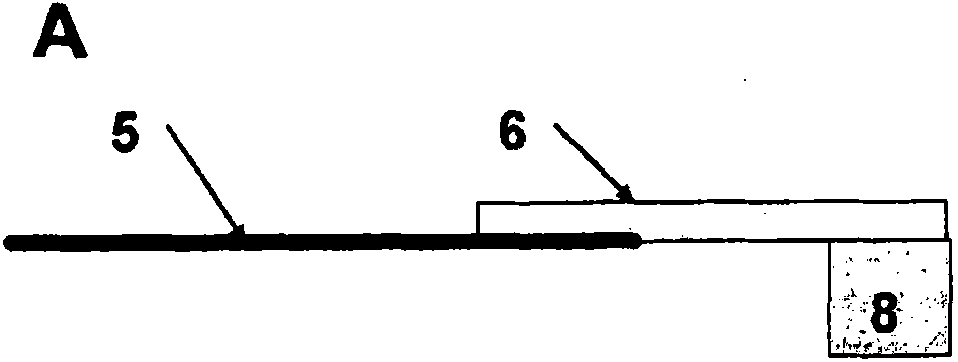High-temperature fuel cell stack, and production thereof
A high-temperature fuel cell and fuel cell technology, applied in the direction of fuel cells, fuel cell grouping, solid electrolyte fuel cells, etc., can solve the problems of high cracking risk of ceramic batteries, fragile glass solder, etc.
- Summary
- Abstract
- Description
- Claims
- Application Information
AI Technical Summary
Problems solved by technology
Method used
Image
Examples
Embodiment Construction
[0040] figure 1 A section through the surrounding metal battery frame A is shown schematically in the case of a two-part or multi-part embodiment. The battery frame consists of a thin membrane-shaped compensation frame 5 and a thicker outer frame 6 , wherein the outer frame 6 adjoins a rigid spacer frame 8 . To produce the frame joint, the thin compensating frame 5 is first welded to the thicker outer frame 6 and the spacer 8 at room temperature, for example by laser beam welding. The compensation frame 5 is made, for example, of chrome steel with a sheet thickness of 0.05 to 0.1 mm. The outer frame 6 is made, for example, of chrome steel with a sheet thickness of more than 0.4 mm, and the spacer 8 is made, for example, of chrome steel with a sheet thickness of approximately 1 mm.
[0041] figure 2 A section through a ceramic battery B is shown, which consists of a carrier anode substrate 3 , an electrolyte 2 and a cathode 1 .
[0042] as from image 3 As can be seen, af...
PUM
| Property | Measurement | Unit |
|---|---|---|
| Layer thickness | aaaaa | aaaaa |
Abstract
Description
Claims
Application Information
 Login to View More
Login to View More - R&D
- Intellectual Property
- Life Sciences
- Materials
- Tech Scout
- Unparalleled Data Quality
- Higher Quality Content
- 60% Fewer Hallucinations
Browse by: Latest US Patents, China's latest patents, Technical Efficacy Thesaurus, Application Domain, Technology Topic, Popular Technical Reports.
© 2025 PatSnap. All rights reserved.Legal|Privacy policy|Modern Slavery Act Transparency Statement|Sitemap|About US| Contact US: help@patsnap.com



